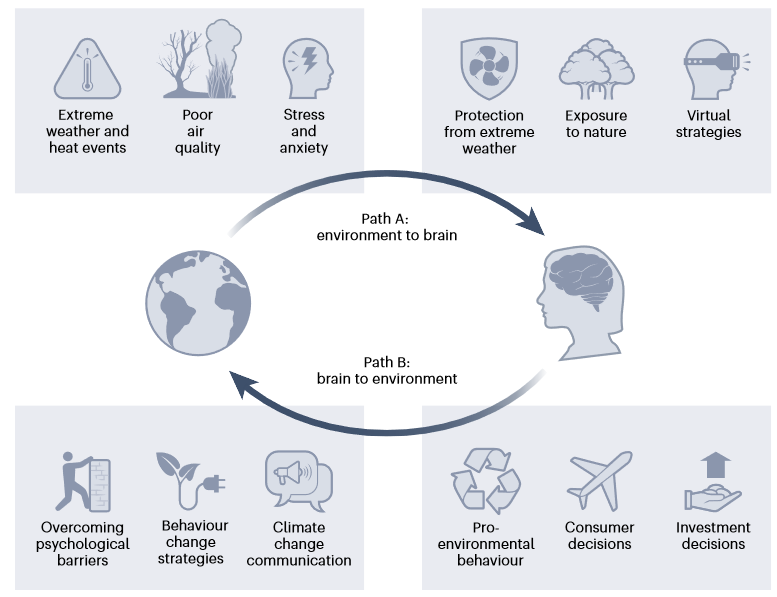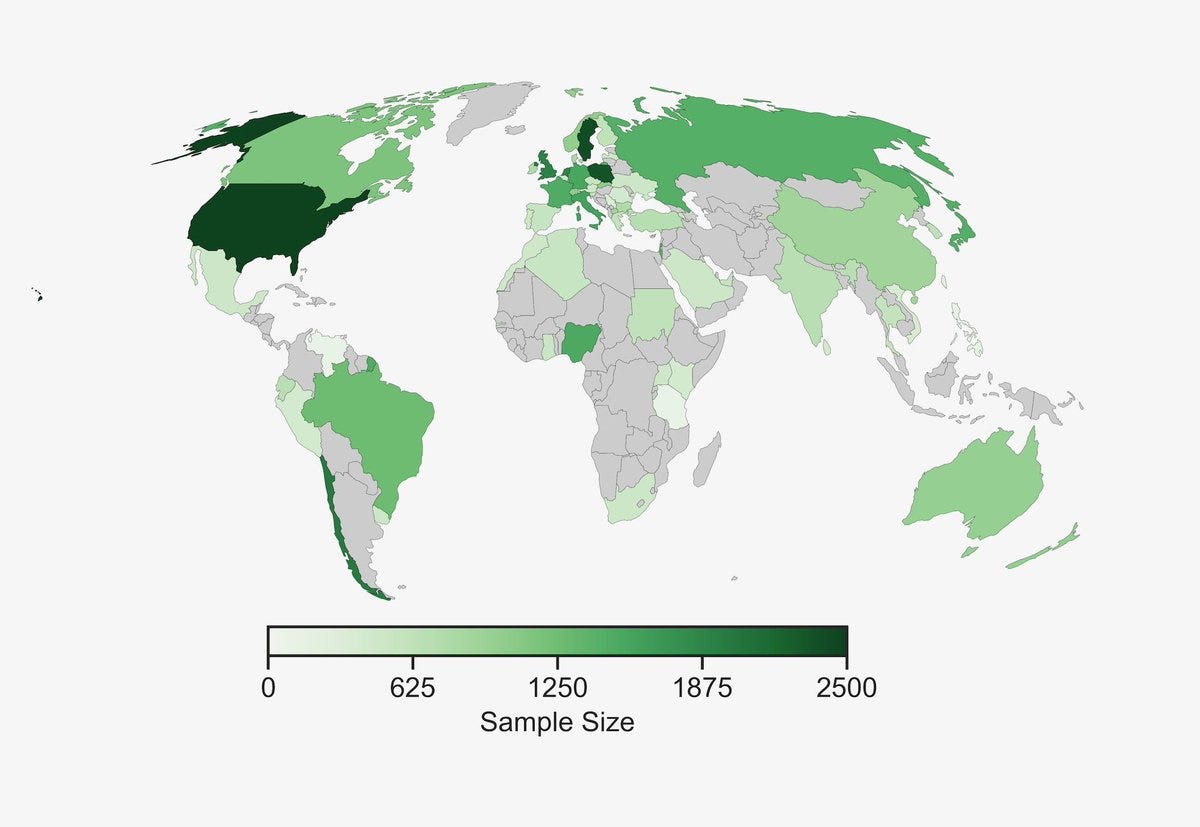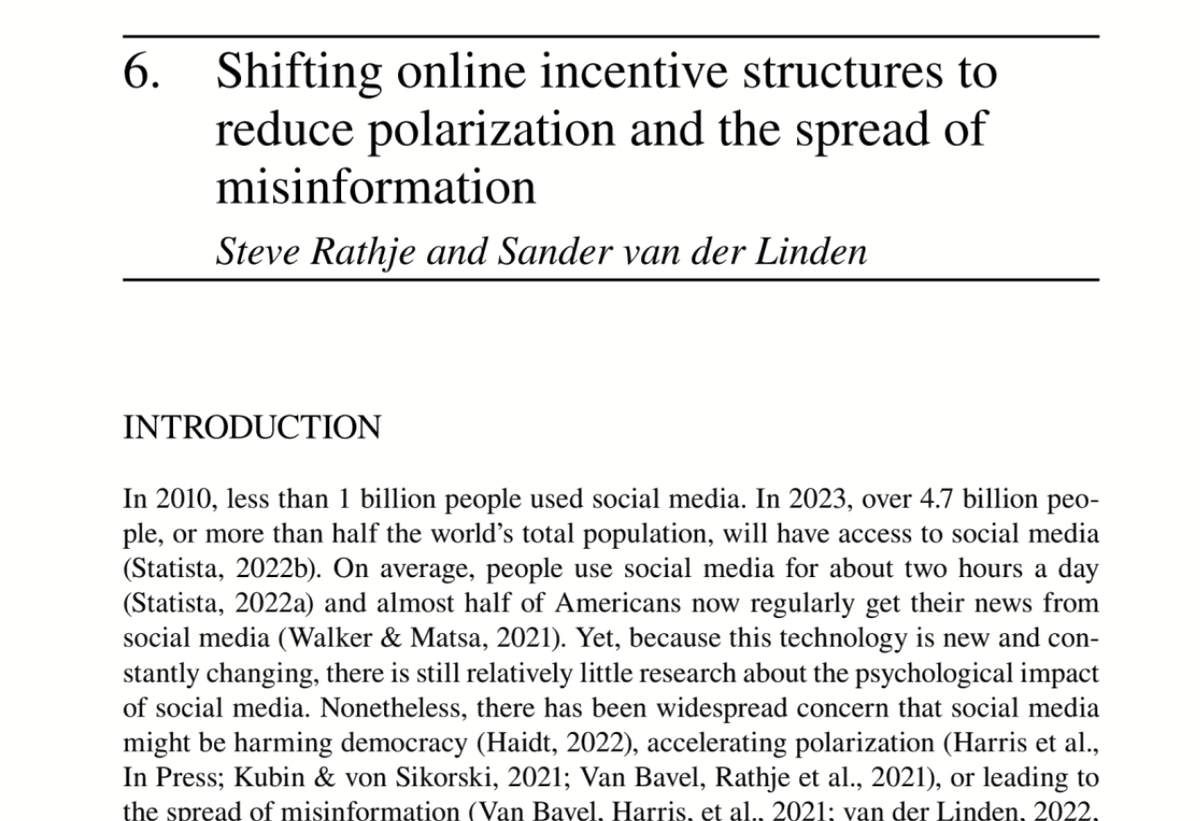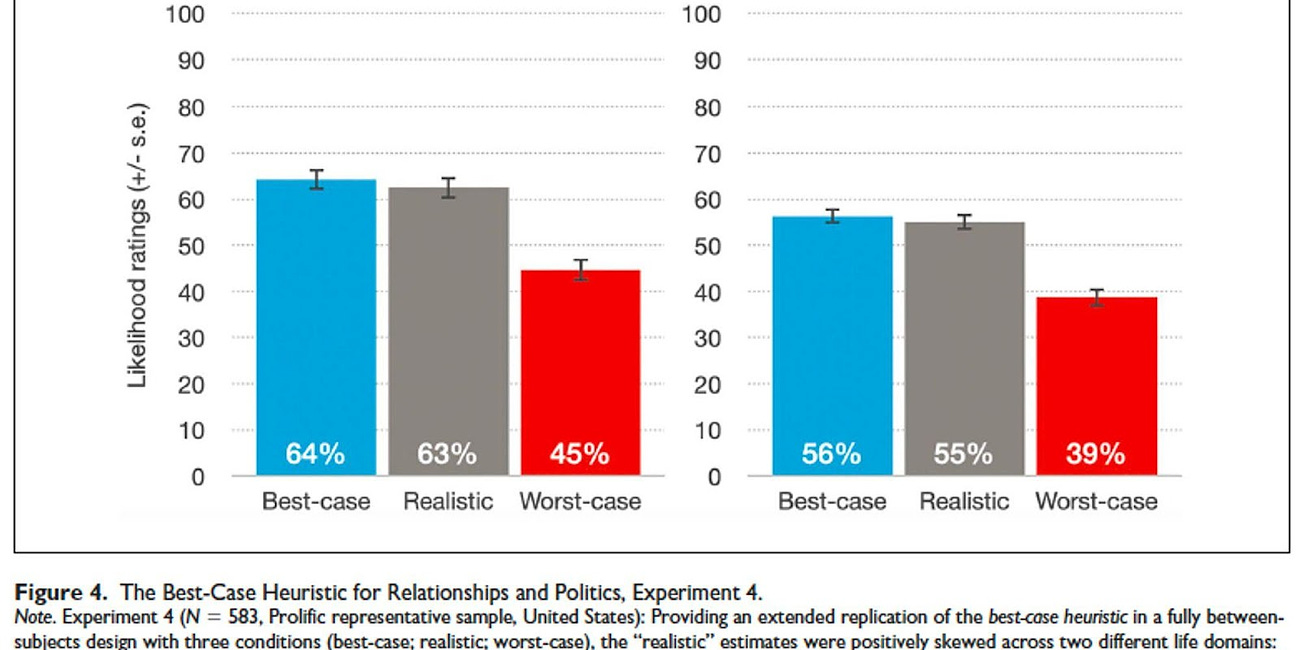Can neuroscience contribute to the fight against climate change?
Our latest paper makes a case for the utility of "Leveraging Neuroscience for Climate Research”
The challenge of addressing climate change is massive. It is an all hands on deck moment, where people from every walk of life—and every scientific field—need to come together to help mitigate and adapt to climate change. However, the insights from neuroscience are rarely used in this context. In a new paper with 11 co-authors, led by former lab postdoc Kimberly Doell, we make the case that neuroscience can be used to better understand the reciprocal relationships between the changing environment and the brain.
In this new paper, we summarize the findings of climate neuroscience thus far, sketch out a roadmap for future research, and highlight some important considerations. In addition, we propose a novel model with two interconnected pathways that will help to stimulate research on this topic. Finally, we present this piece as a call for neuroscientists to join the fight!
Environment-to-brain: Neuroscientists can investigate how the effects of climate change impact the brain, and leverage this knowledge to develop strategies to protect it or make it more resilient against these adverse effects. Such insights can already be gleaned from sub-disciplines of neuroscience, particularly environmental neuroscience, to understand how the environment influences the brain. For example, as climate change worsens, humans will be exposed to more extreme weather events, including heatwaves, droughts and hurricanes, and associated forest fires and floods. Neuroscientists can quantify how these factors impact the brain in terms of structure, function and overall health, and evaluate how this may explain changes in well-being and behavior. They can also investigate the neural substrates of psychological and behavioral responses to climate change, such as heat-related increases in anxiety and conflict. In turn, these insights may help improve strategies to adapt to the consequences of climate change.
Neuroscientists can begin to answer questions such as “How does climate change impact the brain?” This could include a better understanding of the long-term impacts of heightened climate anxiety (especially amongst the youth) or determining what prolonged exposure to wildfire smoke is doing at the neural level. Further, we explain how neuroscience can contribute to the development of adaptation strategies. For example, do anxiety therapies help buffer the impact of climate anxiety? Does using HEPA air filtration systems during fires help mitigate the negative neural consequences?
Brain-to-Environment: Neuroscientists can investigate the neural substrates of the cognitive and affective processes that result in pro-environmental or environmentally harmful behaviors. Research along this pathway can be informed by neuroscience sub-disciplines such as neuroeconomics or social neuroscience. Many human judgements and decisions about climate change are influenced by psychological barriers, cognitive biases, and heuristics that are not necessarily accessible to conscious introspection. Neuroscience approaches have the potential to uncover the neural correlates of judgements, choices, and behaviors that impact the environment.
Capturing motivational signals that predict future behavior may help identify barriers preventing people from showing pro-environmental behaviors and develop and improve intervention strategies to promote these actions. For example, previous neuroimaging research into health communication campaigns has found that neural activation towards campaign messages outperforms focus group evaluations as a predictor of campaign success at both the individual and population levels. Neuroscientific approaches may also inform and improve strategies and policies aiming to motivate pro-environmental choices and behaviors.
Neuroscience can help to understand what drives (or inhibits) sustainable decisions. Neuroscience has been widely used to understand social decision-making, purchase intentions, and consumer behavior. It can contribute to the development and refinement of targeted climate change communications. For example, neuroforecasting techniques can be used to understand how communication strategies are processed at the individual- and group-levels.
Considerations for climate neuroscience
While this perspective highlights the potential contribution of neuroscience to understanding and addressing climate change, we argue that researchers must carefully weigh the costs and benefits of climate neuroscience! Indeed, (neuro)science can have a hefty energy footprint. For example, running a Siemens 3 Tesla MRI scanner five days a week uses approximately the same amount of energy as 18 US homes per year! A conservative estimate of the travel footprint for the 20,000 attendees of the Society for Neuroscience’s 2022 meeting is equivalent to the energy usage of 5,857 US homes per year.
Neuroscientists should aim to reduce their carbon footprints. Focusing on high-priority research that stands to make a substantive contribution should be prioritized. Leveraging complementary approaches, divergent perspectives and interdisciplinary collaborations will help achieve this goal. Academics can also help to mitigate their professional footprint by decreasing overconsumption of resources (for example, laboratory animals), directing grant money to companies that prioritize sustainability, participating in protests, and lobbying societies (for example, the Society for Neuroscience) to help advance green policies and bylaws.
In conclusion, there are many ways though which neuroscience can help to substantially contribute to the fight against climate change by bridging levels of analysis, from neurons to societal actions. Neuroscientists can team up with researchers in medicine, psychiatry, climate science and beyond to study these issues.
To read the full paper: Doell, K. C., Berman, M., Bratman, G. N., Knutson, B., Kühn, S., Lamm, C., Pahl, S., Sawe, N., Van Bavel, J. J., White, M. P., & Brosch, T. (2023) Leveraging neuroscience to fight climate change. Nature Climate Change. https://doi.org/10.1038/s41558-023-01857-4
New Papers and Preprints
In our latest paper, we argue that every aspect of the COVID-19 pandemic response was politically polarized, from mask-wearing to vaccination. This polarization had a significant impact of rates of infections, illness, and mortality from COVID-19 in the United states. Our paper was officially published in Perspectives in Psychological Science. It includes a discussion of implications for public policy to help prevent the same deadly mistakes in the future. This paper was written by Jay Van Bavel, Clara Pretus, Steve Rathje. Philip Parnamets, Madalina Vlasceanu, & Eric Knowles.
Our global intervention tournament tested 11 expert-sourced climate change interventions in 63 countries. It has officially been accepted for publication at Science Advances. The key findings include how beliefs were strengthened most by decreasing psychological distance from consequences of climate change; that “doom and gloom” messaging about climate change was highly effective at stimulating information sharing on social media; some interventions actually backfired and decreased tree planting efforts; and that the effects of each intervention differed based on people’s initial climate beliefs. Through participants’ behavior in the study, the study team was able to plant 333,333 trees via a donation to the Eden Reforestation Project as well! This paper was led by lab alums Madalina Vlasceanu and Kimberley Doell and included hundreds of co-authors from around the globe.
We have a new commentary in Behavioral & Brain Sciences commentary about social media. The goal of social media algorithms is to capture people’s attention by promoting content that they will attend to, assuming that attention-grabbing content is what people want to see on social media. However, people have a tendency to attend to threatening or negative stimuli. This results in social media algorithms boosting negative content, which is something that many social media users expressly don’t want to see. We propose that social media companies should weigh the expressed preferences of users more heavily in their algorithms. We also suggest different changes to user interfaces that can reduce threatening content in the online sphere. This paper was written by Claire Robertson, Kareena del Rosario, Steve Rathje & Jay Van Bavel.
Lab postdoc Steve Rathje recently co-authored a chapter in which he writes about the incentive structure built into social media, and how it can be changed to reduce polarization and the spread of misinformation. It was published in the Handbook of Nudges and Society with Sander van der Linden (see the whole volume https://t.co/QtzK4ikB2B).
News & Announcements
Jay collaborated on a consensus report for the APA and CDC on how to combat misinformation with psychological science. The report examines psychological factors that make people susceptible to misinformation, how and why misinformation spreads, and recommendations to counter it effectively. Fox News also did a nice segment on the report, which you can view below (see our lab’s model of misinformation at the 55 second mark):
We also recently had a poster at SfN’s Neuroscience 2023 conference about the social construction of value and partisan alignment behaviorally and neurally, led by Benjamin Lu (bottom right) and Bo Shen. Check it out below!


If you have any photos, news, or research you’d like to have included in this newsletter, please reach out to our Lab Manager Sarah (nyu.vanbavel.lab@gmail.com) who puts together our monthly newsletter. We encourage former lab members and collaborators to share exciting career updates or job opportunities—we’d love to hear what you’re up to and help sustain a flourishing lab community. Please also drop comments below about anything you like about the newsletter or would like us to add.
And in case you missed it, here’s our last newsletter:
That’s all for this month, folks- thank you for reading, and we’ll see you next month!









